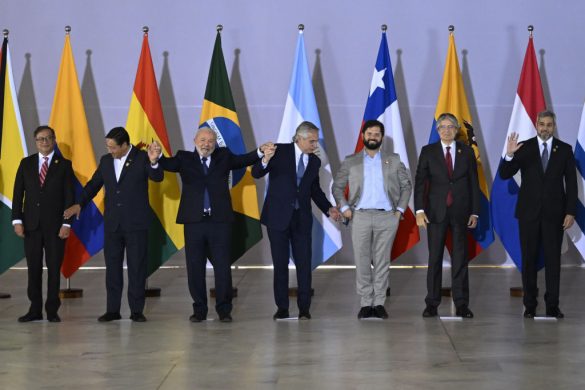SANTIAGO, 29 October 2008: In the midst of an uncertain international context, countries in the region are striving to advance towards trade agreements that reduce associated transaction costs, informs UN Economic Commission for Latin America and the Caribbean, ECLAC.
There is also a trend towards productive integration through private-sector investment and trade decisions. Additionally, efforts are being made to boost the South America Community of Nations (UNASUR) and the “Mesoamerica Project”, formerly the Pueblo-Panama Plan (PPP).
These trends are highlighted in the ECLAC report Latin America and the Caribbean in the World Economy, 2007. Trends 2008, which dedicates three chapters to integration initiatives and trade agreements in the region during 2007-2008.
During 2007, says the report, intraregional trade again registered double-digit growth, although the rise was lower than in previous years. In the first quarter of 2008, intraregional exports continued to expand, compensating the contraction in exports to the United States.
Europe has been losing ground as a trading partner to Latin America and the Caribbean, partially due to the increasing relevance of Asia-Pacific as a market for regional exports, as well as source of imports in the region, notes the report.
For Latin America and the Caribbean, an agreement with the European Union (EU) is strategically relevant, given the failure of the Doha Round. Moreover, since the EU promotes three-pillar agreements -trade, cooperation and political dialogue-, the process can contribute to deepening regional integration, says ECLAC.
An eventual Association Agreement between the European Union and each regional integration body could serve as a catalyst for the convergence of existing trade agreements among Latin American countries.
With regard to Asia-Pacific, until now, efforts have been primarily unilateral and have resulted in bilateral trade agreements. Asia-Pacific is the destination of almost 36 per cent of all Chilean exports; 31 per cent, Dominica; 29 per cent, Cuba; 24 per cent, Peru; 24 per cent, Costa Rica; 18 per cent, Brazil; 17 per cent, Bahamas; 16 per cent, Argentina; 12 per cent, Uruguay; and 12 per cent, Bolivia.
South America concentrates most exports from the region to Asia-Pacific; for Central America and Mexico, the relative importance of Asia-Pacific remains low. For many countries in the region, then, Asia-Pacific markets remain largely unexplored.
The region lacks a more coordinated strategy among groups of countries to strengthen ties with Asia-Pacific, states the report. Greater Latin American integration would contribute in this aim, if the region were to advance towards legal certainty and macroeconomic stability, and achieve unified markets with simple and/or harmonized trade rules. Worth noting in this regard is the initiative of the Latin American Pacific Basin, composed of the eleven countries sharing the Pacific coast, which has joined trade efforts to insert in the Asia-Pacific area.
ECLAC believes the time is ripe to reinforce the concept of “open regionalism”, which strengthens the compatibility of regional and subregional integration schemes and the global trading system.
Regional and subregional agreements contain development issues and policy coordination not included in free trade agreements with partners outside the region. Here lies the importance of integration with a social dimension, much needed in a region plagued with inequality. This task requires serious political and technical efforts, which so far, have been insufficient.
The report Latin America and the Caribbean in the World Economy, 2007. Trends 2008 is available on www.eclac.org















